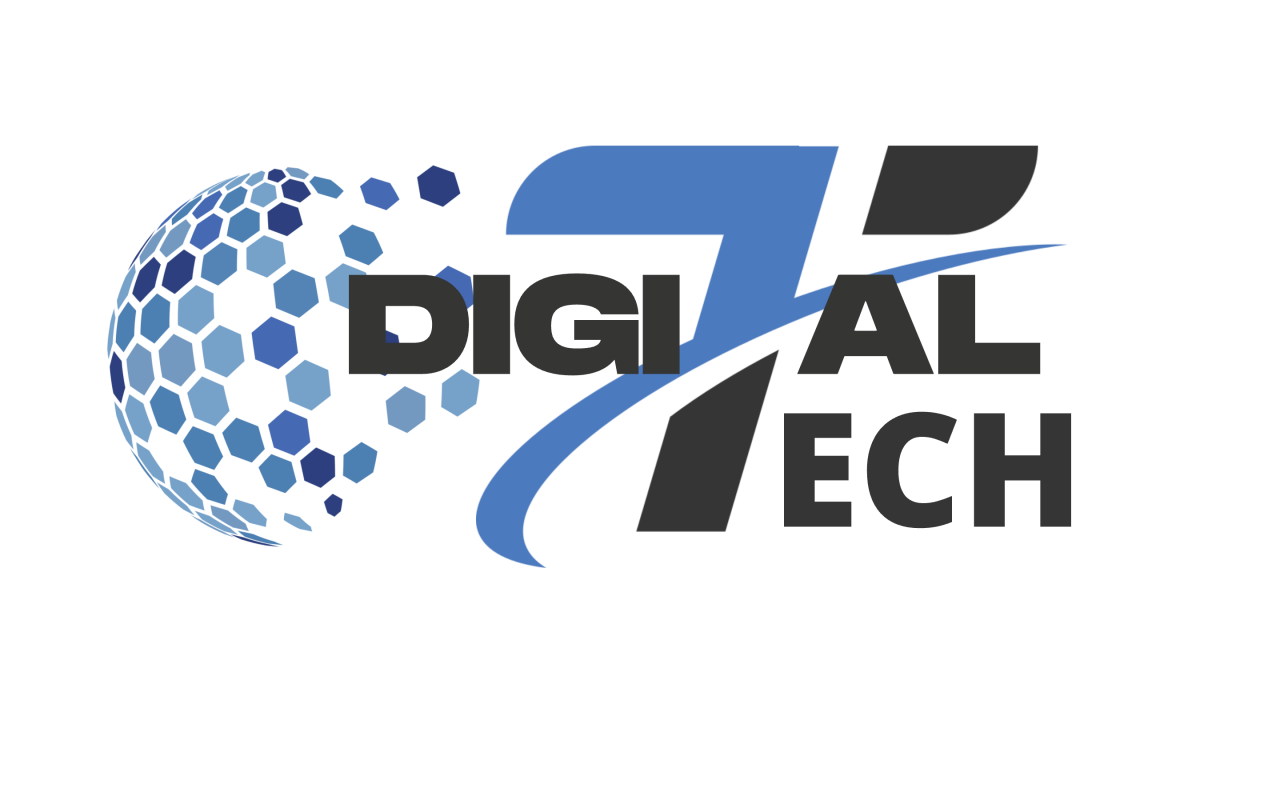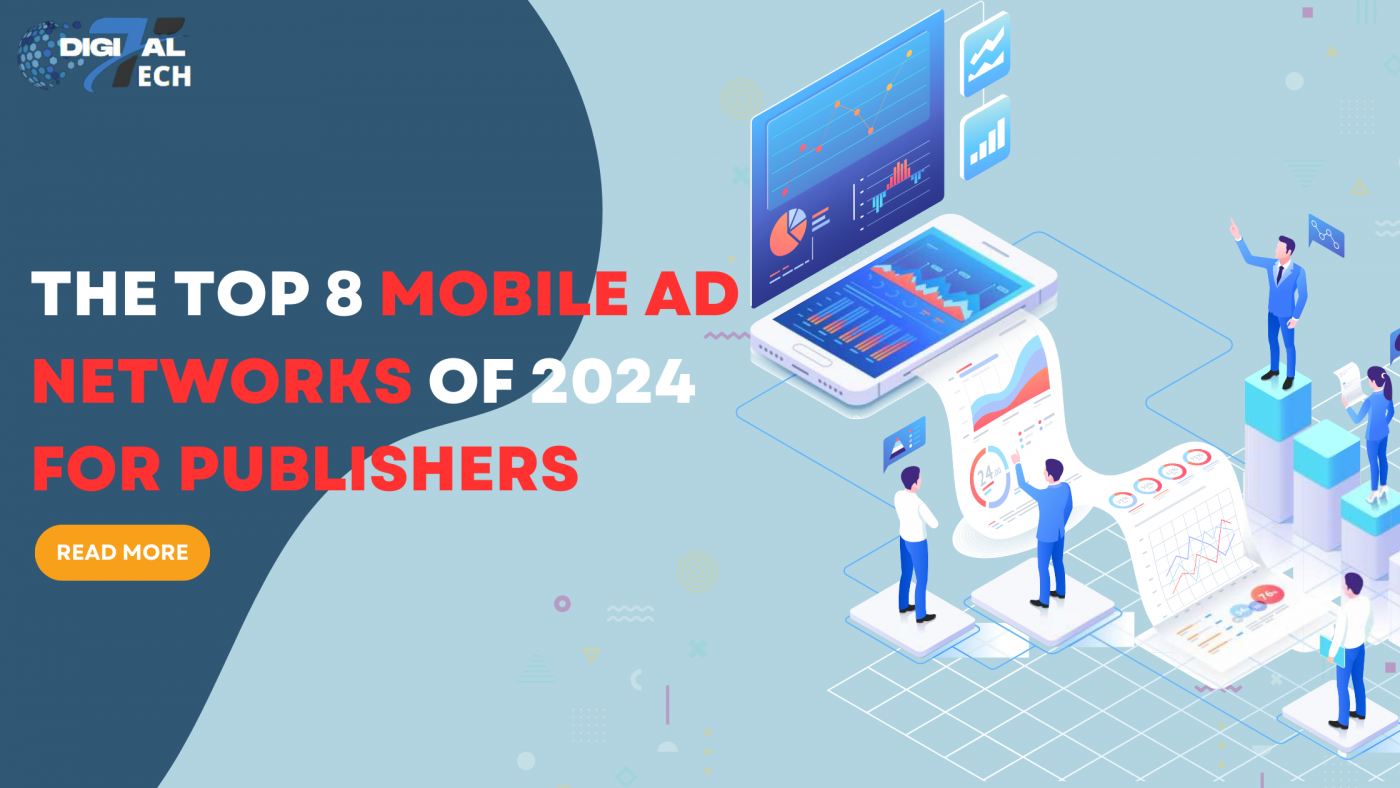Mobile ad networks are the bridge that connects advertisers and app publishers. The primary benefits of mobile ad networks for publishers are the smooth automation and integration of advertising into their applications, which generate a consistent revenue stream without compromising the user experience.
Selecting the right ad network can be crucial for publishers, regardless of experience level, who want to get the most out of an already-developed app.
To aid in your decision-making, our post lists the top 8 mobile ad networks.
1. What are mobile ad networks?
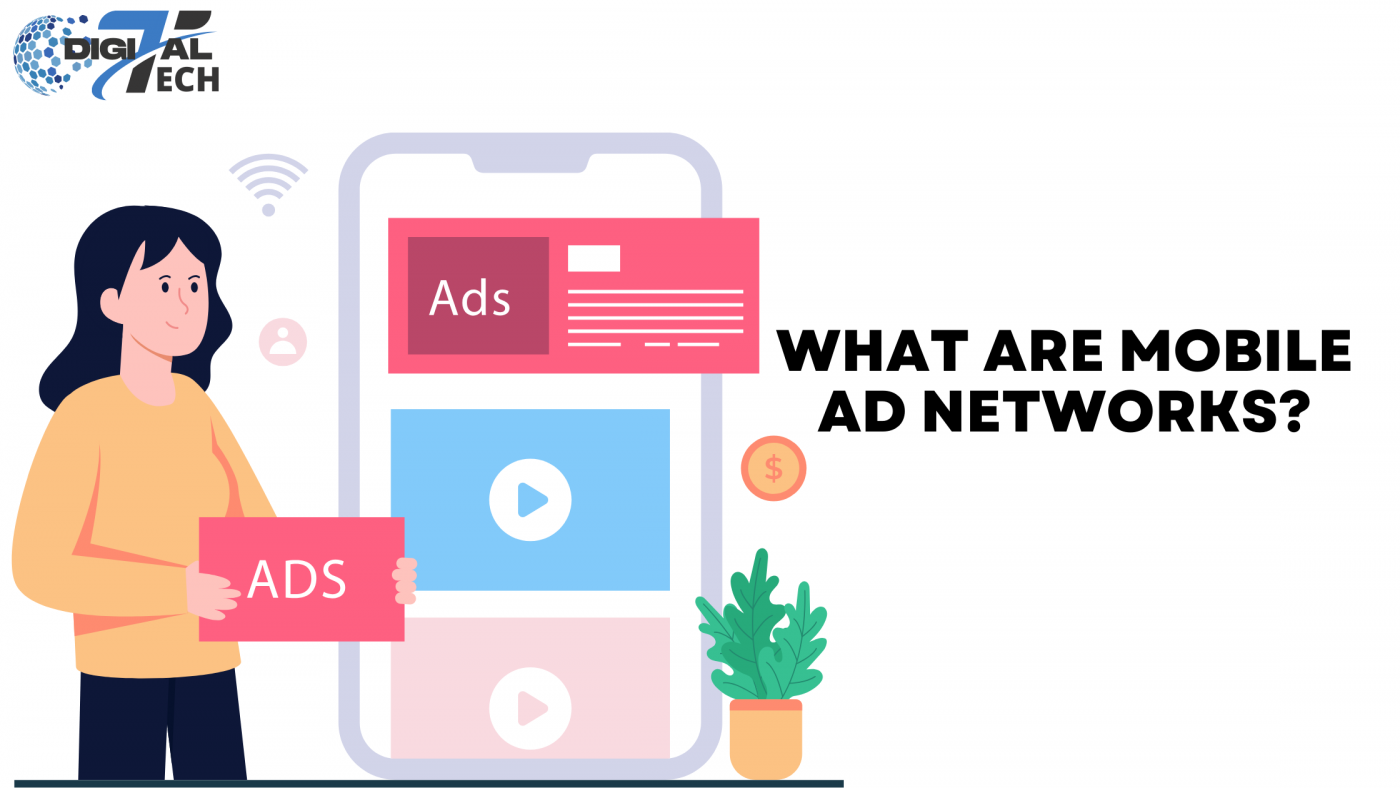
What are mobile ad networks?
A platform that links advertisers and publishers (app developers) looking to monetize their apps is known as a mobile ad network. Advertisers wishing to boost user acquisition through the purchases of ad space, as well as publishers hoping to monetise their app, can both benefit from mobile ad networks.
Mobile ad networks come in several varieties. The finest ones guarantee competitive prices, a high eCPM, a focused audience, superior advertisements, and more.
Publishers who sign up for a mobile ad network get compensated for placing ads within their apps. After that, the network gathers all of the ad space that publishers have contributed to the system and sells it to sponsors.
2. Bidding-based networks versus traditional networks
Two varieties of mobile ad networks exist. Although they both connect advertisers to a publisher’s inventory of mobile ads, only one of them needs as much manual supervision.
The following are some salient features of bidding-based mobile ad networks above traditional ones:
| Traditional networks | Bidding-based networks | |
| What are they? | Networks where advertising space is offered for sale using fixed pricing structures or direct sales, frequently with predetermined rates. | Platforms that allow different advertisers to bid for impressions during real-time auctions to sell ad space. |
| Pricing model | Utilize a fixed pricing model in which the advertiser pays a predetermined amount for a predetermined quantity of clicks or ad impressions. A number of variables, including targeting, ad format, and ad placement, affect the pricing. | Use a real-time bidding system where advertisers bid on ad inventory to determine the price. Based on their budget and the importance of reaching a certain audience, advertisers set their bids. The user sees the advertisement for the winner of the auction, who placed the highest bid. |
| Targeting | The predetermined audience that serves as the basis for targeting may not always match the advertiser’s desired demographic. | Permit marketers to establish bids based on specific user dates, enabling more accurate targeting. |
| Transparency | Rates are frequently set in stone, and it’s not always obvious what influences the price. | Increased transparency will allow advertisers to modify their bids based on the real-time cost of ad inventory. |
| Flexibility | Advertisers might have to commit up front to an agreed-upon budget and ad placement. It may be challenging to make changes once a campaign has begun. | Give advertisers more freedom by allowing them to modify their bids in real-time in response to performance information. |
3. 8 Best Mobile Ad Networks
1. Google Admob
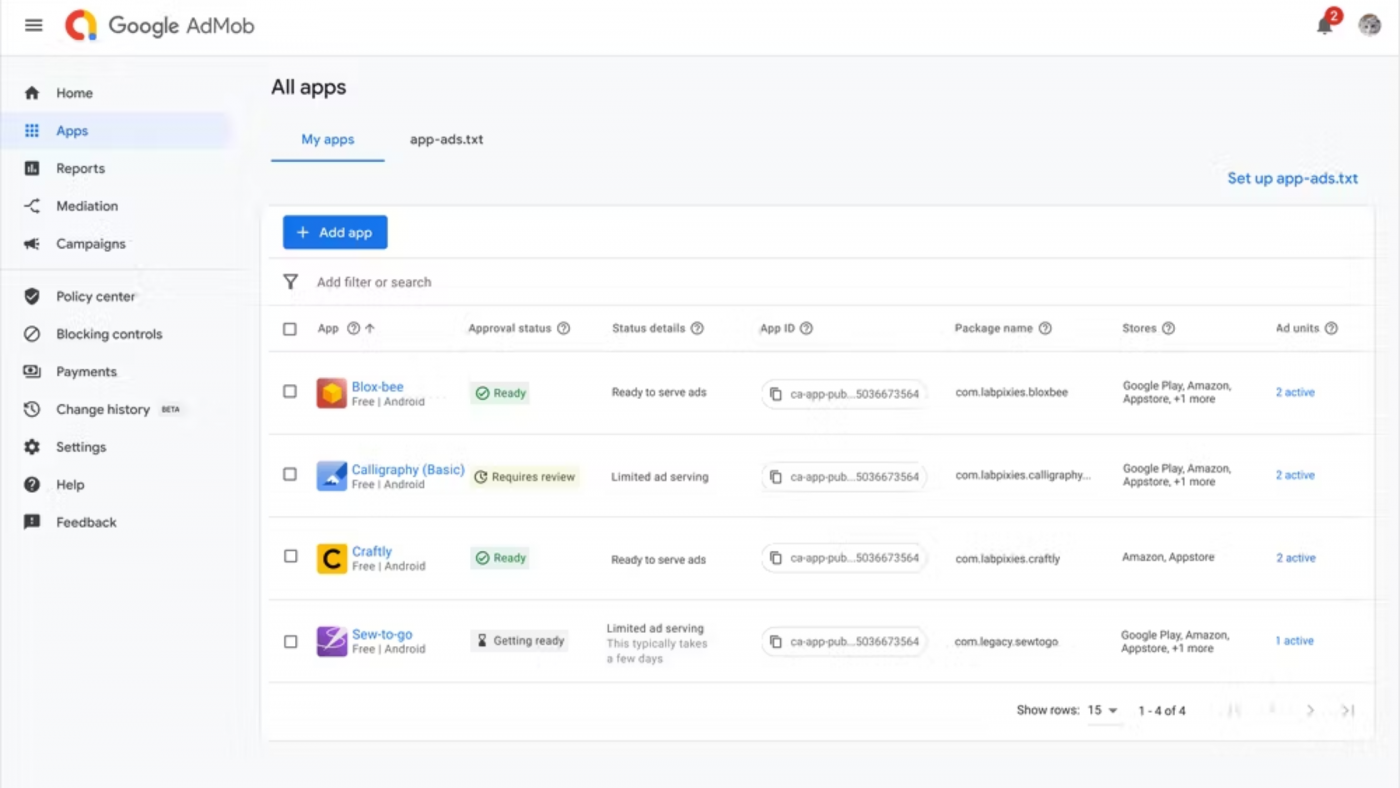
Google AdMob is one of the largest businesses in the industry
Among the biggest companies in the market is Google AdMob. Much like other Google products, Admob is really simple to use. All of the most widely used ad formats, such as native, rewarded, interstitial, and banner ads, have strong demand for advertising on AdMob. It lets apps of all shapes and sizes be monetized through ads and supports a variety of currencies.
Pros and cons
Integration of apps is made simple with Google AdMob. It provides easily adjustable creative templates, automated audience segmentation, and access to over thirty premium ad networks and demand sources. Therefore, if you’re a newbie, this is an excellent place to start.
It’s not the most lucrative choice, though, for modest publishers with little readership. Users have taken issue with it because its revenues are on the lower end of the spectrum. Additionally, the payout minimum of $100 is really large.
2. SmartyAds

SmartyAds is an all-in-one programmatic ad network
The all-in-one programmatic ad network SmartyAds features an in-house SSP, DSP, and ad exchange. It gives them access to both public and private markets, allowing them to optimize their income possibilities. They also provide thorough reporting so that publishers may monitor their auctions.
Pros and cons
With an advanced header bidding engine for improved eCPMs, SmartyAds provides a full-stack ad platform that includes an ad network and additional monetization technologies, as well as extensive reporting tools and an easy-to-use SSP interface.
For publishers, they have a high traffic threshold, though.
3. AppLovin
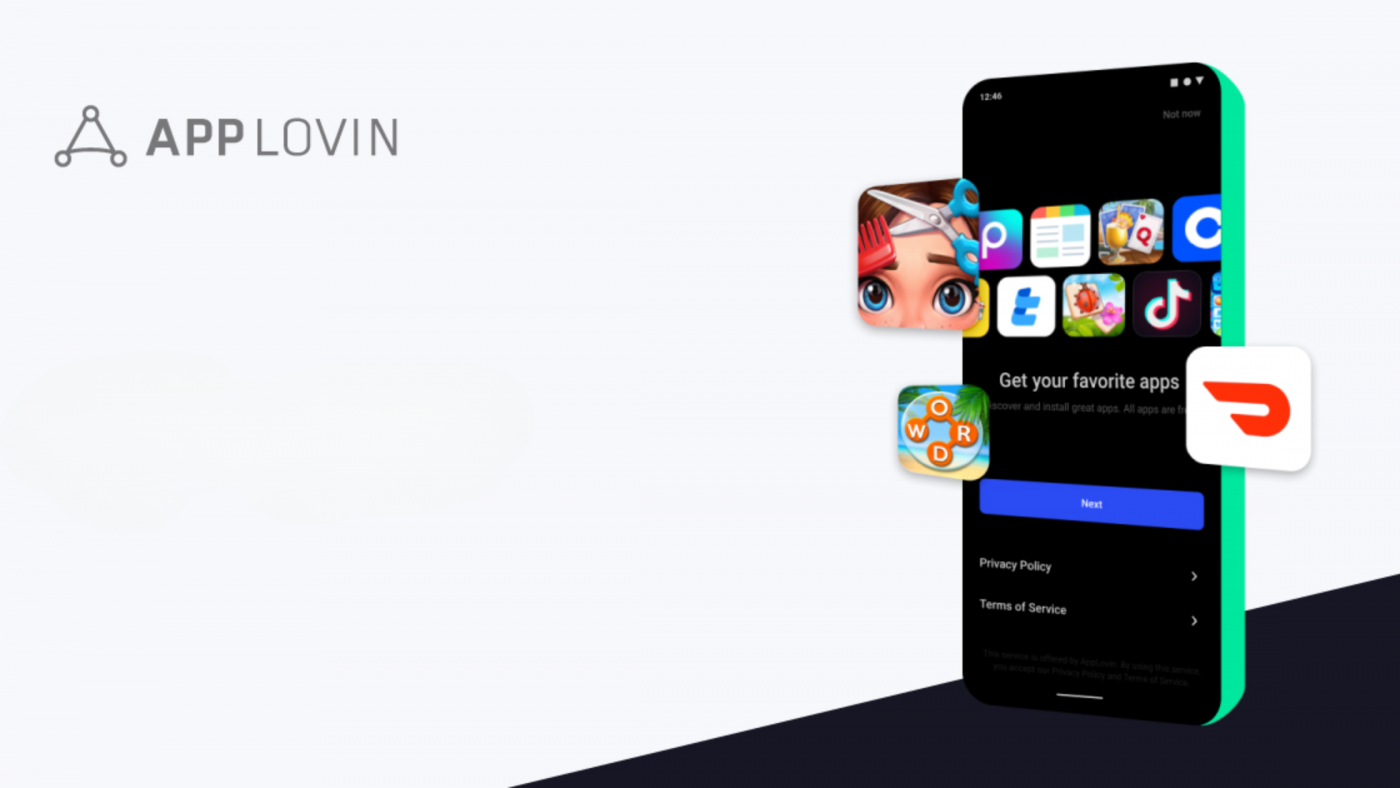
AppLovin is a mobile monetization platform
With over 100 partners and integrations for advertising, AppLovin is a mobile monetization platform. It supports a variety of ad formats, including banners, playable advertising, rewarded videos, skippable and non-skippable videos, and real-time app analytics.
AppLovin also includes a number of brand safety tools that are intended to identify and report questionable advertisements and content.
Pros and cons
AppLovin is renowned for its waterfall setup, lightweight SDK, and excellent analytics display. Nevertheless, a few individuals expressed their displeasure with their low fill rates and eCPM.
4. Equativ
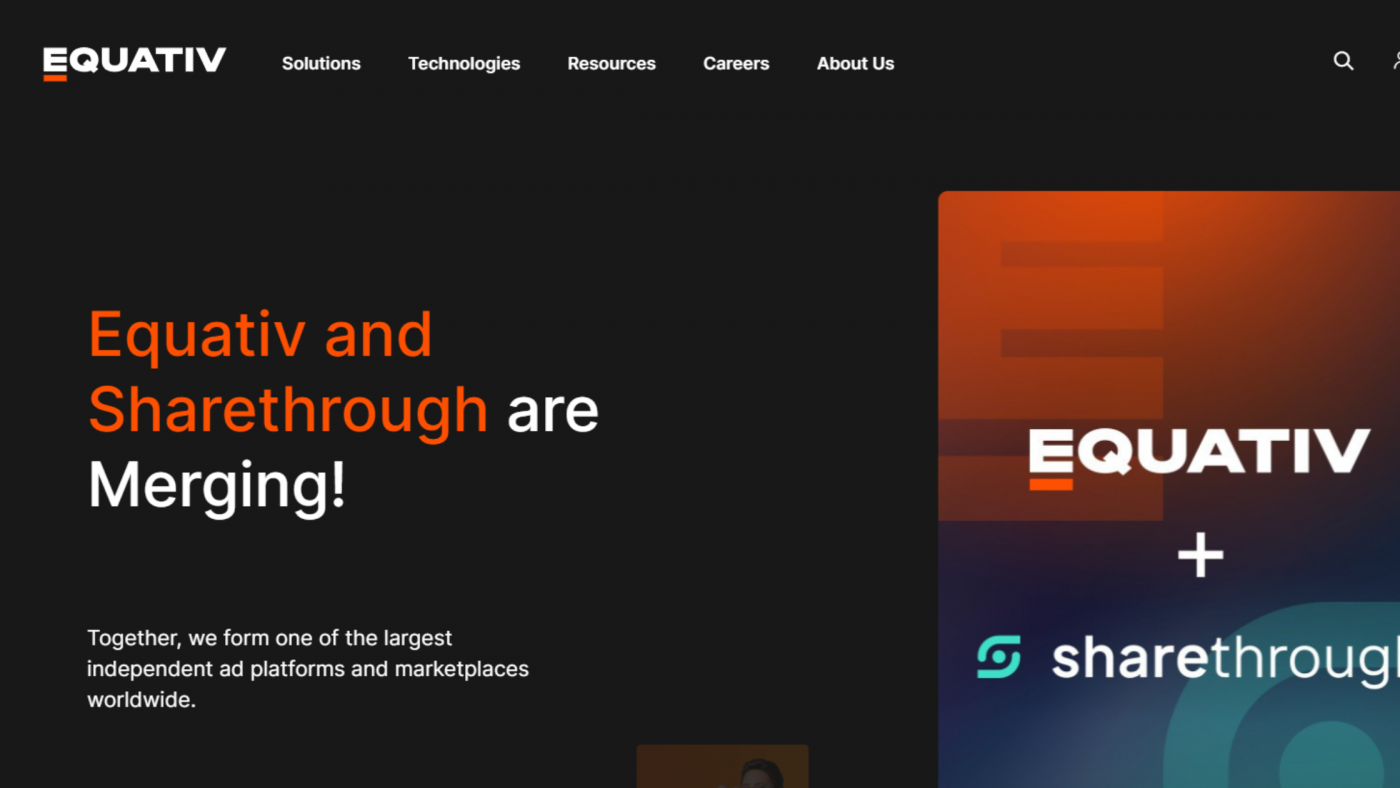
Equativ is an all-in-one solution for publishers looking to monetize their apps
Publishers wishing to monetize their apps may do so all in one place with Equativ. Support for a large variety of ad formats is one of its main advantages. Because the platform is based on contextual targeting, cookieless environments can greatly benefit from its use.
Top features
Some of the top features of Equativ include:
- A variety of mobile ad formats
- Contextual ad targeting
- Ad quality and brand safety tools
- Header bidding technology
5. PubMatic

PubMatic is primarily an OTT advertising platform
Primarily, PubMatic is an over-the-top (OTT) advertising technology that facilitates cross-device monetization, encompassing mobile applications. Publishers can use any kind of mobile ad format they choose, including rich media advertisements and standard banner ads. PubMatic provides comprehensive audience and advertisement analytics together with header bidding technology.
Top features
Some of the top features of PubMatic include:
- Open and private marketplaces
- Detailed ad and audience analytics
- Proprietary SSP
- Premium ad demand
- Header bidding technology
6. Smaato
Real-time bidding and other programmatic techniques, such as programmatic direct, are the foundation of the ad tech platform Smaato. In order to guarantee brand safety, it also has stringent anti-fraud and ad quality procedures in place.
Pros and cons
Smaato’s unique ad server, which gives publishers more control over their inventory and a wider audience reach, is one of its main advantages. With Smaato, you may access an open marketplace without needing to subscribe.
Unfortunately, a few users have complained that the user interface is confusing and cluttered, which makes for a bad user experience. The platform may be quite complex and daunting.
7. InMobi
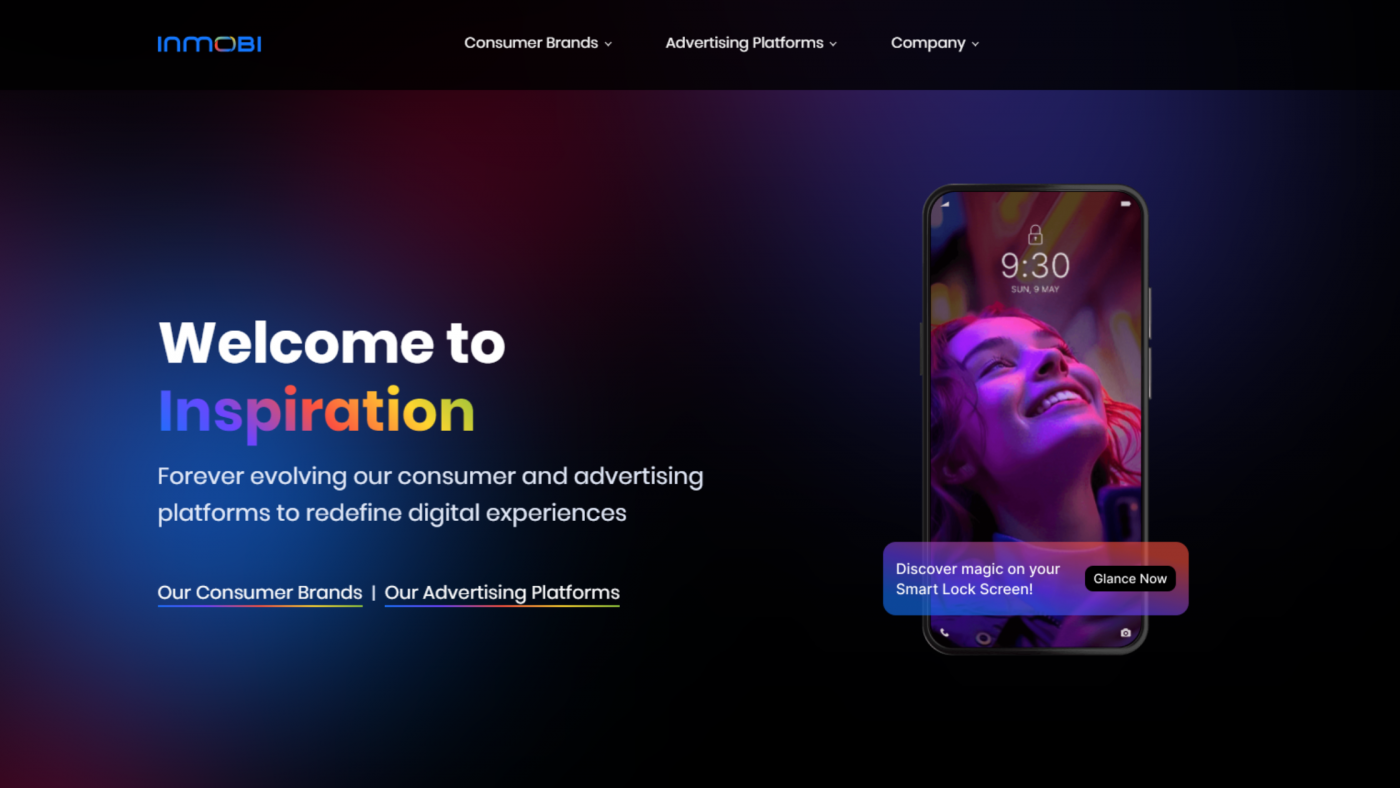
InMobi is a mobile advertising network designed both for publishers and advertisers
A mobile advertising network called InMobi is intended for both marketers and publishers. It offers publishers a wide range of ad demand from hundreds of DSPs and comes with a variety of ad formats, like rich media and playable advertisements. InMobi also provides audience bidding, ad mediation, and in-app monetization.
Pros and cons
Among the primary advantages are that InMobi has one of the best mobile SDKs in the business and provides access to premium, worldwide demand.
One drawback that customers have brought up is InMobi’s small stock. Their inability to optimize revenue potential is a result of feeling constrained by the reach and ad possibilities available to them.
8. Media.net
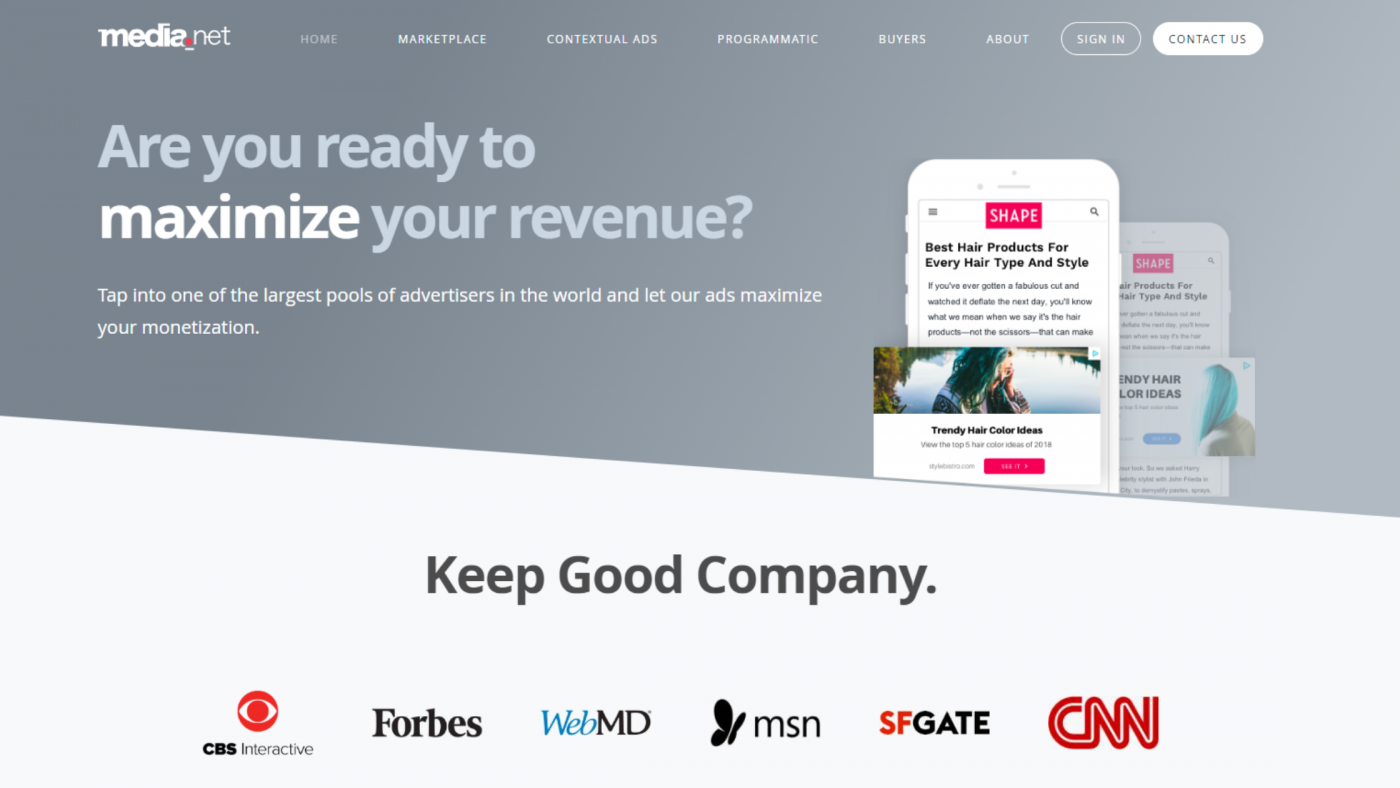
Media.net is one of the largest advertising companies in the world
One of the biggest advertising agencies in the world is Media.net. Dynamic ad optimization combined with contextual native advertising that is specifically targeted is their key selling point. It also has a marketplace where publishers may use direct deals and real-time bidding to get high-quality ad demand.
Pros and cons
One of the greatest substitutes for AdSense and one of the highest-paid contextual ad networks is Media.net.
Nevertheless, Media.net only needs website traffic from the US, Canada, and the UK. According to certain users, their revenue is not updated in real-time, and occasionally, in order for publishers to get paid for this advertising, website visitors must double-click on the ads.
4. How do you operate mobile ad networks?
For individuals who are already familiar with the workings of ad networks, the switch to mobile ad networks is simple because they function similarly to traditional ad networks. Their functionality and integration are, nevertheless, specific to mobile applications and their distinct ecosystems.
Publishers need to incorporate the ad network’s SDK into their apps in order to make money from them. This SDK makes it possible to gather ad inventory from integrated apps and makes it easier for marketers looking to sell it to audiences that meet specific criteria.
The following four steps outline the procedure by which mobile ad networks operate:
1. SDK integration
First, the publisher adds the network’s code library to the app’s codebase in order to incorporate the mobile ad network’s SDK into their app. The ad network can now get inventory (ad space) from the app thanks to this integration.
2. Data collection
The ad network gathers information from the app after integration, including device IDs and user activity. This information is essential for comprehending the tastes and demographics of the app’s user base, which enables more precise ad targeting.
3. Ad matching
The ad network’s server processes the gathered data, using algorithms to examine user data. This analysis ensures that the advertisements presented are as relevant to the user’s interests and behaviors as possible by matching the app’s inventory with the advertisers’ requirements.
4. Ad delivery
The chosen ad is then served to the relevant user by the ad network after the match has been completed. The purpose of this stage is to maximize the effectiveness of the advertisement by choosing campaigns that are most likely to increase engagement and revenue.
5. Conclusion
Mobile ad networks benefit publishers by offering a wide range of advertisers, enhanced user engagement, and a more sustainable monetization strategy.
Publishers should select a mobile ad network that offers user-friendly tools and comprehensive data while also fitting their needs, audience demographics, and budget. Payout methods, the variety of ad formats, adherence to data protection regulations, and targeting options should all be compared.
Making the correct fit is essential to maximizing your app’s earning potential as a publisher. The synergy between your content and the selected ad network can boost your app’s revenue potential.
